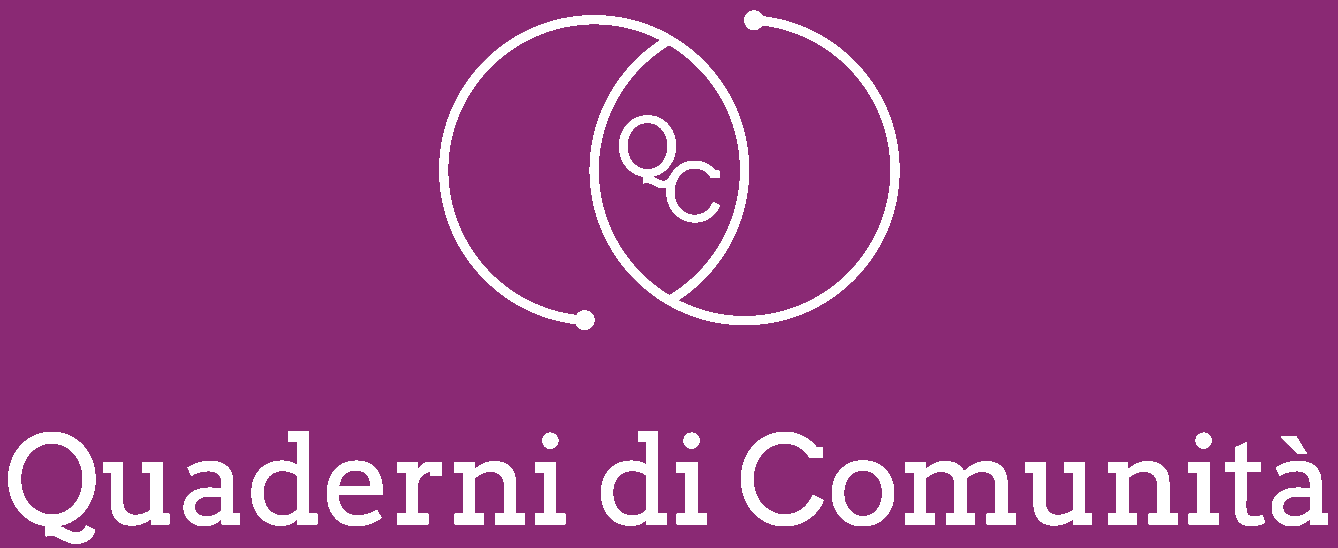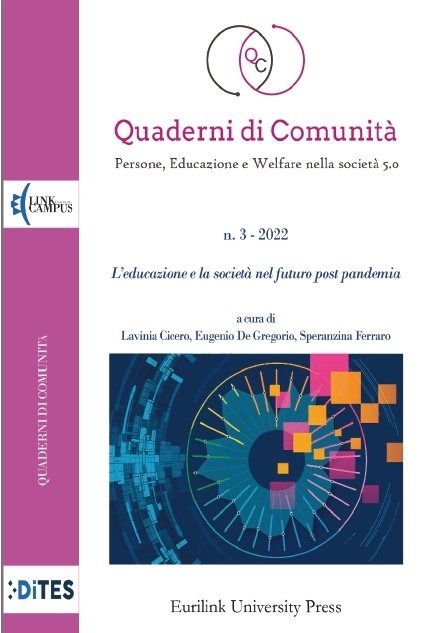The irreplaceable relationship with the Other: opportunities and limits of innovations in migrant services during the pandemic
DOI:
https://doi.org/10.61007/QdC.2022.3.81Keywords:
migrants, social and health emergency, social services, learningAbstract
This paper investigates the response to the pandemic given by services for migrants, highlighting the solutions implemented and the lessons learned. Through an analysis of 34 projects promoting different dimensions of integration (language training, school integration, job placement, access to services, participation in public life), this contribution highlights the irreplaceable nature of the direct relationship with the recipients and the opportunity to maintain some of innovations experimented.
References
Alexander, C. & Charles, G. (2009). Caring, mutuality and reciprocity in social worker - client relationships: Rethinking principles of practice. Journal of Social Work, 9(1), 5-22.
Banca Mondiale (2010). Moving for prosperity. Global Migration and Labor Market. Retreived (19 ottobre 2022) from: https://www.worldbank.org/en/research/publication/moving-for-prosperity.
Besozzi E., Colombo M., Santagati M. (2013). Misurare l’integrazione nelle classi multietniche, Rapporto 2012, Éupolis Lombardia - Regione Lombardia - Fondazione ISMU: Osservatorio Regionale per l’integrazione e la multietnicità.
Blangiardo, G. & Cesareo, V. (2009). Indici di integrazione. Un’indagine empirica sulla realtà migratoria italiana. (p.23). Milano: Franco Angeli Editore.
Blangiardo, G. & Mirabelli, S.M. (2018). Vita e percorsi di integrazione degli immigrati in Italia. Misurare l’integrazione. (p. 361). Roma: ISTAT.
Catarci, M. (2014). Considerazioni critiche sulla nozione di integrazione di migranti e rifugiati (p. 71-84). REMHU: Revista Interdisciplinar da Mobilidade Humana, 22(43).
Little D. (2012), The linguistic integration of adult migrants and the “Common European Framework of Reference for Languages”, Language Policy Unit, Council of Europe.
Little D. (2008), The “Common European Framework of Reference for Languages” and the development of policies for the integration of adult migrants, Language Policy Unit, Council of Europe.
Consiglio d’Europa. (1997). Measurement and indicators of integration. Directorate of Social and Economic Affairs. Strasburgo: Council of Europe Publishing.
Commissione Europea (2019). Integrating Students from Migrant Backgrounds into Schools in Europe: National Policies and Measures.
Commissione Europea (2020). Communication from the Commission to the European Parliament, the Council, the European Economic and Social Committee and the Committee of the Regions on “Action plan on Integration and Inclusion 2021-2027”, COM(2020) 758 final.
Fondazione ISMU (2021). La pandemia COVID-19 tra la popolazione migrante e di origine straniera nelle province di Milano, Bergamo, Brescia e Cremona: https://www.ismu.org/la-pandemia-covid-19-tra-la-popolazione-migrante-e-di-origine-straniera-nelle-province-di-mi-bg-bs-cr/.
Gnan, E. (2021). Il fenomeno migratorio e le condizioni degli stranieri in era pandemica: https://welforum.it/il-fenomeno-migratorio-e-le-condizioni-degli-stranieri-in-era-pandemica/.
Gui L. (2020). Spiazzamento e apprendimento dall’esperienza in tempo di COVID, in Sanfelici M., Gui L., Mordeglia S., Il servizio sociale nell’emergenza COVID-19, Milano: FrancoAngeli Editore.
Harrikari, T., Romakkaniemi, M., Tiitinen, L. & Ovaskainen, S. (2021). Pandemic and social work: exploring Finnish social workers’ experiences through a SWOT analysis. British Journal of Social Work, https://doi.org/10.1093/bjsw/bcab052.
IPSOS per Istituto Toniolo e Parole O_Stili (2021), Didattica a distanza, un anno dopo. https://paroleostili.it/wp-content/uploads/2021/03/Didattica-a-distanza-un-anno-dopo_compressed-2.pdf.
OIM, (2016). Integration and social cohesion: key elements for reaping the benefits of migration. Retreived (19 ottobre 2022) from: https://www.iom.int/sites/g/files/tmzbdl486/files/2018-07/IOM-Thematic-Paper-Integration-and-Social-Cohesion.pdf.
OIM, (2021). Labour mobility and skills in response, recovery and post covid-19 pandemic. Retreived (19 ottobre 2022) from: https://www.iom.int/resources/labour-mobility-and-skills-response-recovery-and-post-covid-19-pandemic.
OCSE, (2022). Making migration and integration policies future ready. Retreived (19 ottobre 2022) from: https://www.oecd.org/migration/mig/migration-strategic-foresight.pdf.
OCSE (2021). How can we foster lifelong learning attitudes in students? Retreived (15 giugno 2021) from: https://oecdedutoday.com/how-can-we-foster-lifelong-learning-attitudes-in-students/.
Penninx, R. (2014). Integration policies for immigrants of the City of Turku / Åbo, Finland. KING Project in-depth study; No. 9. Milano: Fondazione ISMU.
Sanfelici M., Gui L., Mordeglia S., Il servizio sociale nell’emergenza COVID-19, Milano: Franco Angeli.
Shi, Y., Jang, H. S., Keyes, L. & Dicke, L. (2020). Nonprofit service continuity and responses in the pandemic: Disruptions, ambiguity, innovation, and challenges. Public Administration Review, 80(5), 874-879.
Simone D. (2020), Servizi sociali e persone immigrate, in Sanfelici M., Gui L., Mordeglia S., Il servizio sociale nell’emergenza COVID- 19, Milano: Franco Angeli.
Wibeck, V., Dahlgren, M. A. & Öberg, G. (2007). Learning in focus groups: An analytical dimension for enhancing focus group research. Qualitative research, 7(2), 249-267.
Downloads
Published
How to Cite
Issue
Section
License
Copyright (c) 2022 Quaderni di comunità

This work is licensed under a Creative Commons Attribution-NonCommercial-NoDerivatives 4.0 International License.







